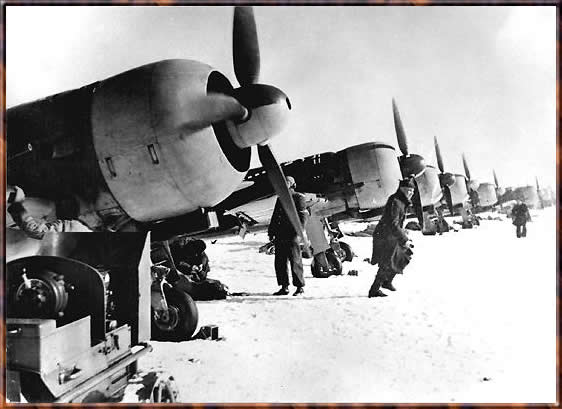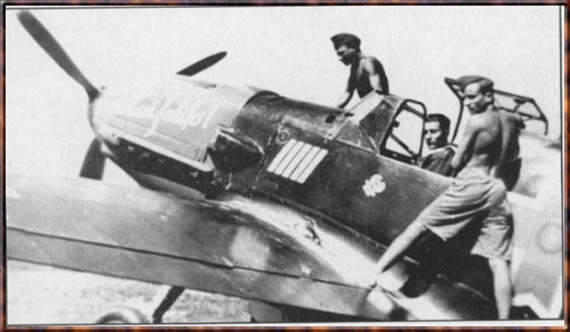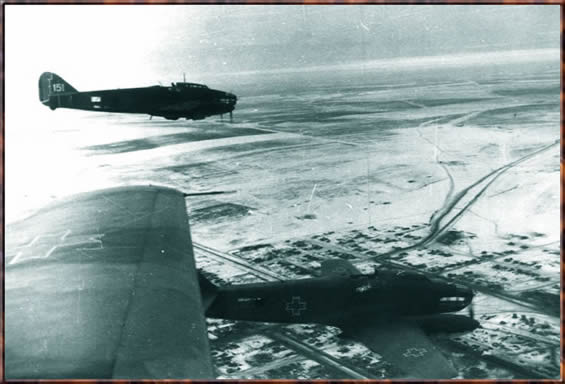The main Soviet blow came in those sections of the front held
by the Romanian 3rd and 4th Armies. Both of them were exhausted, since
after having fought hard in the Crimea, were forced to head north and
assume new positions without any kind of rest. Even worse, they were dangerously
overstreched, a fact which the Romanian Supreme HQ had pointed out repeatedly,
but the OKW, obsessed with capturing Stalingrad, ignored the warnings.
The ARR and Luftflotte IV were supposed to ensure air support, but unfortunately,
bad weather grounded their planes for days. When they could finally intervene,
it was too little too late. Many squadrons found themselves forced to
abandon their bases, when the Russian tanks threatened to overrun them.
Because of this, many planes and men had to abandoned because there was
simply no time or no space for everybody. The 7th Fighter Group's airfield
at Karpovka was completely encircled, and, after repulsing Soviet attacks
for two days, the group had to take-off and make a run for it under heavy
fire. Other units ( like the 6th Fighter Group ) were were sent immediately to attack advancing Soviet forces, and managed
to inflict heavy losses on the Russian cavalry units. Transport squadrons
flew night and day, inspite of all the dangers, trying to supply Romanian
or German units encircled by the Russians. The 105th Transport Squadron,
with its Ju-52's excelled at such missions, managing to re-suppply the
Romanian 1st Armored Division, which had been encircled behind the enemy
lines. Thanks to the relentless efforts of the Ju-52 pilots in face of
heavy Soviet AA fire and appalling weather, the division was capable of
fighting its way out of the trap and reach the Axis lines.


